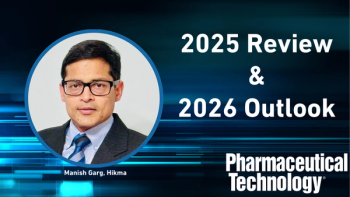
- Pharmaceutical Technology-04-02-2020
- Volume 44
- Issue 4
Learning Lessons in Crisis Management
Regulatory emergency planning has been put to the test with the COVID-19 pandemic.
Editor’s Note: This article was published in Pharmaceutical Technology Europe’s April 2020 print issue.
European medicine regulators have, over the past few decades, been drawing up a series of detailed plans for the emergency development and massâscale production of vaccines, antivirals, and other medicines, as well as diagnostics to combat epidemics or pandemics. Regulatory bodies have been confronted by a range of diseases from outside Europe, such as severe acute respiratory syndrome (SARS) in 2002, H5N1 and H7N9 bird flues in 2003 and 2013, Middle East respiratory syndrome (MERS), and H1N1 swine flu in 2009. Among the most dangerous has been the Ebola virus, which first appeared in 1976 and still has not been completely eradicated (1).
Most of these infectious diseases have high death rates-from 10% for SARS to 53% for H5N1 flu-but have a relatively low transmission level. Although posing major threats to the health of the region, they have not had a major impact on Europe.
However, the novel coronavirus disease, COVID-19, which emerged in China in late December to become a pandemic with over 600,000 cases and close to 30,000 deaths globally by 29 March 2020 (2), has been an entirely different matter. With a high transmission rate and a relatively low death rate, it has changed the whole regulatory process of dealing with sudden pandemics.
A massive challenge
In Europe, COVID-19 has been a massive challenge to national healthcare services, public health policies, and scientists striving to develop vaccines and medicines to fight the virus as rapidly as possible. The carefully worked out emergency-response plans of the regulators to help bring new vaccines and medicines to the market has been severely tested.
By late March 2020, Europe had become the global epicentre of the outbreak when growth in infections in China started to slow and cases in the World Health Organization’s (WHO’s) European Region rose to more than 360,000 with over 20,000 deaths (2).
“There are no vaccines available (for COVID-19), and there is little evidence on the effectiveness of potential therapeutic agents,” the EU’s European Centre for Disease Prevention and Control commented in a bulletin on 12 March 2020 (3). “In addition, there is presumably no pre-existing immunity in the population against the new coronavirus and everyone in the population is assumed to be susceptible.”
Fortunately, regulators had learned a lot from other, smaller-scale, outbreaks, particularly those of swine flu in 2009 and the 2014–2016 wave of the Ebola virus. The European Medicines Agency (EMA), responsible for the EU’s central medicines authorization process and for coordinating the EU’s medicines licensing network down to national level, performed “lessons to be learned” exercises after the swine flu and Ebola episodes.
Swine flu highlighted the importance of providing a scientific platform for quick research into new vaccines and medicines, working closely with partners such as public health agencies, and improved collaboration with international organizations active both inside and outside Europe.
The regulatory effectiveness of the current response to COVID-19 has been helped by closer relationships built up by medicines agencies in Europe with researchers and drug companies working on new medicines. Regulators now frequently become involved at an early stage in the development of new drugs to speed up time-to-market.
As a result, many of the companies submitting candidates for anti-COVID-19 vaccines and medicines for approval are already known to regulators, who have often been acquainted with the technologies behind them as well.
An international dimension to research
Regulators are having to cope with a growing international dimension to the emergency research into new vaccines and therapeutics, whose ultimate objective is to bring to the market as quickly as possible products with a potential for global application. National agencies are tending to play a limited role amid this drive to globalize anti-COVID-19 vaccines and medicines with availability across Europe being only the first move to a worldwide market.
CureVac, a German biotech company based at Tuebingen, which is developing a messenger RNA (mRNA) vaccine against COVID-19, is already known to German and EMA regulators because of its progress with work on a rabies vaccine, company officials said in a phone press conference on 17 March 2020 (4). After the COVID-19 outbreak, CureVac’s mRNA technology quickly made it a frontrunner for the development of a global coronavirus vaccine, a role in which it is competing with BioNTech, another German mRNA specialist.
The attraction of the CureVac and other mRNA technologies is that its production can be scaled up without difficulty to good manufacturing practice (GMP) standards to produce low-cost vaccines that can be relatively easily stored and distributed without the need for refrigeration. Messenger RNA vaccines have the added advantage of being effective in small doses, and they can be modified fairly quickly to counter new strains of a virus.
With vaccines based on more traditional technologies necessitating refrigeration, European regulators have pointed to the problem of storing and administering investigational products to clinical trial participants who have had to self-isolate. With the early backing of regulators, CureVac’s COVID-19 vaccine seems destined to reach the market quickly. Clinical trials are due to start in the summer 2020 (4).
Senior company executives met Ursula van der Leyen, the European Commission’s (EC’s) president, in March 2020. This was followed by the commission offering an €80 million (US$97 million) grant for the building at Tuebingen of a mass production plant for the vaccine (5). Also in March 2020, company executives met in Washington, DC with President Donald Trump and members of his administration. This meeting prompted media reports of an American plan to buy all of CureVac’s COVID-19 vaccine output or even to acquire the whole company, all of which has been strongly denied by CureVac executives.
Even for small companies, such as the UK-based start-up vaccine developer and producer Stabilitech, national regulatory approval of their COVID-19 vaccine is regarded as merely a stepping-stone to global distribution. A global goal is especially the case for UK-based companies because the country formally left the EU on 31 January 2020 and, hence, also left the EU’s medicines licensing network.
Prior to the COVID-19 pandemic, Stabilitech’s technology platform was already known to the UK’s Medicines and Healthcare products Regulatory Agency (MHRA) because of the company’s plans for authorization of a vaccine against the Zika virus (6). The company has developed a formulation technology that enables vaccines to be produced in temperature-resistant capsules, simplifying distribution and administering to patients.
“Before COVID-19, we have been talking a lot to MHRA about our Zika vaccine, whose technology is similar to that for our COVID-19 vaccine,” Jeff Drew, Stabilitech’s chief scientific officer, told Pharmaceutical Technology Europe. “After clinical trials and completion of arrangements for large-scale GMP production in Europe, we plan to seek MHRA and then EMA approvals.”
However, similar to a lot of other European companies developing vaccines and COVID-19 therapeutics, Stabilitech is looking to China as a fast-track option for global distribution. It has already established links with the Chinese Academy of Sciences, the country’s leading research institute.
An alternative distribution route
Another route to global distribution is being provided by WHO, which has been playing a major role in controlling the pandemic. WHO quickly published an updated version of its Emergency Use Listing (EUL) procedure for emergency distribution of unlicensed products two days after the Chinese announced the genome sequence for the COVID-19 virus in early January 2020. The new version simplified the EUL application process for manufacturers after it resulted in no new vaccines or therapeutics being listed in the 2014–2016 Ebola outbreak (7).
Unlicensed vaccines, medicines, and in-vitro diagnostic devices on the list can be made available throughout the world. Under the scheme, which is part of the 2005 International Health Regulations backed by all 194 WHO member countries, dossiers on products submitted for listing are thoroughly assessed by an expert committee, with the first endorsements likely to be made in March or April 2020 (7).
The EUL is seen by WHO as a process running parallel with those operating in individual countries or regional entities, such as the EU, and as a result should not interfere with ongoing clinical trials (7). Additionally, WHO stresses that EUL inclusion is not equivalent to authorization by a medicines licensing agency (7).
The organization also refers to the EUL scheme covering one or more additional waves of COVID-19. Both itself and other medicines and public health agencies are preparing for COVID-19 to be around for some time.
References
1. WHO, “
2. WHO, “
3. ECDC, “
4. CureVac, “Conference Call on Current Developments,” curevac.com, 17 March 2020.
5. EC, “
6. WHO, “
7. WHO, “
Article Details
Pharmaceutical Technology Europe
Vol. 32, No. 4
April 2020
Pages: 6–8
Citation
When referring to this article, please cite it as S. Milmo, “Learning Lessons in Crisis Management,” Pharmaceutical Technology Europe 32 (4) 2020.
Articles in this issue
almost 6 years ago
Biosimilars Poised for Gains in US Marketalmost 6 years ago
Critical Knowledge for Preparing Auditsalmost 6 years ago
Can Vaccine Development Be Safely Accelerated?almost 6 years ago
Supercritical Fluid Chromatography Systemalmost 6 years ago
Quaternary Diaphragm Pumpalmost 6 years ago
Custom-Built Heated Storage Vesselalmost 6 years ago
Well Plates and Cartridges for Liquid Extractionalmost 6 years ago
Alternative Cleaning Validation Methods for BiologicsNewsletter
Get the essential updates shaping the future of pharma manufacturing and compliance—subscribe today to Pharmaceutical Technology and never miss a breakthrough.




